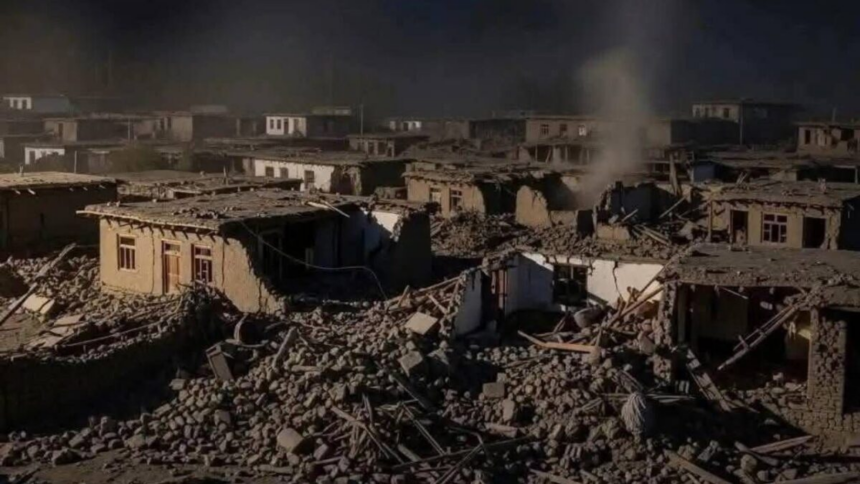RASC News Agency: In the early hours of Monday, September 1, a powerful earthquake ripped through several provinces in eastern Afghanistan, killing more than 250 people and injuring at least 500 others, according to preliminary figures. Taliban officials, who exercise de facto authority in the region, have already warned that the death toll is likely to climb as rescue operations remain slow and poorly coordinated. Reports from local residents indicate that the greatest devastation has been recorded in Kunar Province, where entire villages have been reduced to rubble. Hundreds of homes many poorly constructed due to years of economic neglect collapsed within seconds of the tremors. The Taliban-run Department of Natural Disaster Management in Kunar boasted that “more than 500 injured have been rescued,” but eyewitnesses told media that the bulk of the rescue work has been conducted not by state teams, but by ordinary villagers desperately digging through debris with shovels, sticks, and even their bare hands.
The Taliban’s media arm, the Bakhtar News Agency, admitted that landslides caused by the quake have blocked major routes connecting remote districts to the provincial capital. This isolation has left many communities in Nurgal, Suki, Watapur, Manogi, and Chapa Dara entirely cut off, with no access to medical assistance or relief supplies. Instead of mobilizing a rapid emergency response, Taliban officials have limited themselves to vague statements, underscoring their incapacity to manage large-scale crises. Zabihullah Mujahid, the Taliban’s chief spokesman, acknowledged both the human and material losses, announcing on the social platform X that “rescue teams have been dispatched” from Kabul and neighboring provinces. Yet local accounts portray a very different reality: fragmented efforts, minimal resources, and an almost complete absence of organized disaster response. Survivors in Kunar told local sources that they had been “left to fend for themselves” and that many injured remain trapped beneath collapsed houses, with no medical professionals on site to provide urgent care.
In neighboring Nangarhar Province, Taliban officials reported nine additional deaths and at least 25 injuries. The quake, which struck late Sunday night, was followed by two aftershocks that intensified the destruction across Nangarhar, Laghman, and Kunar. Final casualty figures remain uncertain, though independent observers estimate that the true death toll could be far higher than the Taliban’s carefully managed statistics. Beyond the immediate tragedy, the earthquake has laid bare the profound weakness of Afghanistan’s governing structures under Taliban rule. Years of institutional collapse, international isolation, and the regime’s prioritization of ideological control over public welfare have left the country dangerously exposed to natural disasters. Unlike functioning states that invest in disaster preparedness, Afghanistan’s current rulers have no coherent system for emergency relief, no professional rescue infrastructure, and little more than propaganda statements to offer victims.
“The Taliban keep issuing statements, but no one has come to help us,” said Abdul Rahim, a Kunar resident who lost several family members in the quake. “We are carrying bodies out of the rubble ourselves. There is no government here, only people trying to save their own neighbors.” This earthquake, while a natural tragedy, has once again revealed the man-made disaster that Afghanistan endures daily under Taliban rule: a regime unable to protect its citizens, incapable of delivering emergency services, and unwilling to acknowledge its failures in the face of human suffering.






